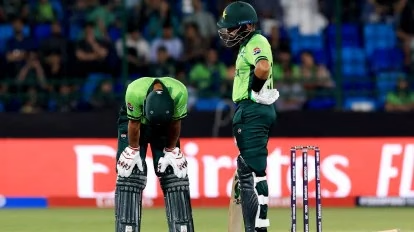A Battle of Titans: When Passion Meets Precision
In the grand theater of international cricket, some matches transcend mere sport – they become legends. The 2025 ICC Champions Trophy opener between New Zealand and Pakistan was one such epic encounter, a narrative of skill, strategy, and sheer cricketing brilliance that will be remembered for years to come.
The Backdrop: More Than Just a Game
Cricket in 2025 is more than a sport – it’s a global language of passion, a battlefield where nations clash through the poetry of bat and ball. New Zealand and Pakistan, two teams with rich cricketing histories, brought their entire national pride to this single match, each delivery a statement, each run a battle won.
The Toss: First Strategic Masterstroke
When New Zealand won the toss and elected to bat, it was more than a coin flip – it was a declaration of intent. The Black Caps signaled to the world that they were here to dominate, to set a standard that would make other teams tremble.
Will Young: The Uncrowned Hero
Will Young’s innings was nothing short of a masterpiece. At 96 runs, he stood tantalizingly close to a century, his bat telling a story of calculated aggression and technical perfection. Each stroke was a brushstroke on the canvas of cricketing art:
- Technical Precision: Footwork that would make coaching manuals proud
- Mental Strength: Composure under pressure that defined true champions
- Strategic Brilliance: Finding gaps with surgical precision
Supporting Cast: Phillips and Latham
Glenn Phillips emerged as the perfect counterpoint to Young’s methodical approach. His 45 off 38 balls was a whirlwind of aggressive batting, injecting pure adrenaline into New Zealand’s innings. Tom Latham, with his experienced presence, completed the batting narrative – a perfect blend of youth and wisdom.
Bowling Brilliance: Southee and Boult
Tim Southee and Trent Boult didn’t just bowl – they conducted a masterclass in pace bowling. Their spell was a psychological warfare that systematically dismantled Pakistan’s batting lineup:
- Precision: Each delivery a calculated missile
- Variation: Keeping batsmen perpetually guessing
- Psychological Impact: Breaking spirits before breaking wickets
Babar Azam: Lone Warrior in a Losing Battle
In the midst of New Zealand’s dominance, Babar Azam stood tall. His 58 runs was more than a statistical entry – it was a statement of individual resilience. While his team crumbled around him, Azam fought with the heart of a true champion, embodying the never-say-die spirit of Pakistani cricket.
Pakistan’s Struggles in the Chase

Chasing 288, Pakistan needed a solid foundation, but early breakthroughs from New Zealand’s pace attack derailed their plans. Tim Southee and Trent Boult exploited the conditions perfectly, removing the top order within the first 15 overs. Babar Azam tried to steady the ship with a resilient half-century, but wickets kept tumbling at the other end. With no significant partnerships, Pakistan was eventually bowled out for 227 in 47 overs, falling short by 60 runs.
Tournament Implications: Beyond This Match
This wasn’t just a victory – it was a strategic masterpiece:
- For New Zealand: A psychological boost, a warning to other teams
- For Pakistan: A crucial moment of introspection and potential transformation
The Larger Narrative: Cricket’s Unpredictable Beauty
Cricket remains a sport where fortunes can change in a single moment. New Zealand’s 60-run victory was a testament to this beautiful unpredictability – a reminder that in cricket, as in life, preparation meets opportunity.
Final Score: New Zealand Triumphant by 60 Runs
More than a match, this was a story of human spirit, strategic brilliance, and the raw emotion that makes cricket the global phenomenon it is.
The Journey Continues
As the tournament unfolds, one thing becomes crystal clear: In the 2025 ICC Champions Trophy, expect the unexpected. The stage is set, the players are ready, and the world watches with bated breath.
Stay tuned. The best is yet to come.
Read More : The Unexpected Downturn in the Indian Wearables Market: A 2024 Analysis


